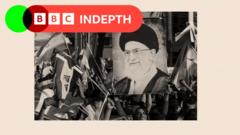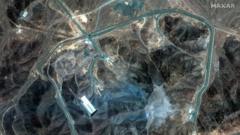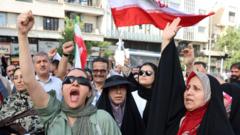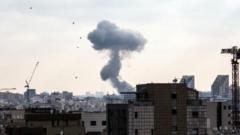The Pentagon has provided insights into 'Operation Midnight Hammer,' the US mission that allegedly struck key Iranian nuclear facilities using B-2 stealth bombers and advanced weaponry. The operation involved intricate deception tactics, showcasing high-level military strategy, but the full impact on Iran's nuclear ambitions remains uncertain.
Operation Midnight Hammer: US Claims Success in Striking Iran's Nuclear Facilities

Operation Midnight Hammer: US Claims Success in Striking Iran's Nuclear Facilities
A detailed analysis of the US military's complex operation targeting Iranian nuclear sites using advanced technology and stealth tactics.
A meticulously coordinated military operation marked a pivotal moment in US-Iran relations, with the US declaring a significant victory following ‘Operation Midnight Hammer,’ a mission aimed at striking Iran's nuclear infrastructure with advanced military capabilities. According to a Pentagon briefing delivered by General Dan Caine, Chairman of the Joint Chiefs of Staff, the mission combined stealth with tactical deception to shield its true intent from international scrutiny.
The operation began shortly after midnight, with Secretary of Defense Pete Hegseth and President Donald Trump monitoring the launch of several B-2 stealth bombers from Whiteman Air Force Base in Missouri. The bombers, equipped with "bunker buster" bombs designed to penetrate deep underground structures, set their sights on critical nuclear sites in Iran, specifically targeting the Fordo facility, which is well-fortified beneath heavy earth.
Rather than the anticipated deployment to Guam, these bombers executed a diversion, with their true mission concealed from the world. While international attention was diverted toward the Pacific, the actual strike force silently navigated across the Atlantic. Gen Caine explained that this strategic misdirection involved a select group of planners and military leaders who orchestrated the operation with minimal communication.
Upon approaching the Middle East, the B-2s were escorted by support aircraft that scouted for potential threats, achieving their goals without encountering Iranian air defenses. As the US officials noted, Israel’s control over the region's airspace allowed for an unchallenged assault, exemplifying a coordinated strike that involved both aerial bombing and cruise missiles launched from a US submarine in the Arabian Sea.
The primary objective unfolded as the fleet entered Iranian airspace around 17:00 EDT, with bombers targeting Fordo and the Natanz nuclear site. Utilizing the Massive Ordnance Penetrator (MOP) bombs, they aimed to disrupt Iran’s nuclear advancements significantly. Commanders claim that this marked the first application of such weaponry in a live combat scenario, resulting in injuries to key infrastructure.
In a span of roughly 25 minutes, the bombers executed a high-stakes attack, dropping 14 MOPs on their targets while Tomahawk missiles struck at the third nuclear site in Isfahan. Overall, around 75 precision-guided weapons were unleashed from a fleet of more than 125 aircraft, leading Hegseth to assert that the operation delivered a decisive blow to Iran's nuclear capabilities.
While US officials hailed the mission as a total success, the true extent of the damage to Iran's nuclear program remains to be fully evaluated. In the wake of the strikes, Iranian sources have acknowledged the assault, but they have minimized the reported destruction, leaving many questions regarding the effectiveness and longevity of the operation's impact on Iran's nuclear aspirations. Despite the intricate planning and execution, experts remain cautious about the long-term ramifications of this show of military force.






















